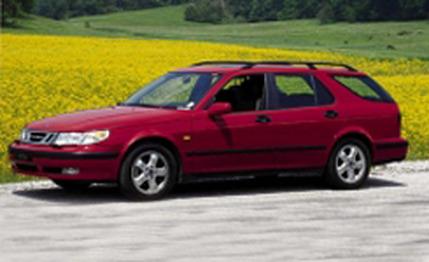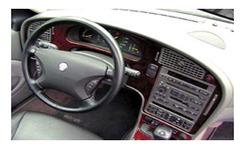 Long-Term Road Test
Long-Term Road Test
The editorial face is sheepishly wincing as we admit that, despite our constantly cajoling you to opt for a dynamically superior station wagon over a sport-ute or minivan, we haven't exactly put our moolah where our mouths are. It seems that during nearly 30 years of formal long-term testing, we've worn out the tires on 9 minivans and 14 SUVs, but this Saab 9-5 is only the second wagon we've invited for an extended stay. (The first was the diminutive Subaru Impreza L of October 1994.) We could protest that we've just been reporting on the vehicles you buy, or we could simply set about putting things right.
Our long-term antennae were abuzz about the 9-5 as soon as we clapped eyes on Saab's unique asymmetrically turbocharged 3.0-liter V-6 (it uses one turbo driven by the front bank of cylinders to pressurize the entire engine). We always feel compelled to flog new engine technologies, especially when they produce 200 horsepower and 229 pound-feet of torque.
The wagon version was particularly enticing, due to its many innovative cargo-area features. There are the $425 optional rollout load floor, which can support 440 pounds' worth of tailgate partying, and a pair of cargo tie-down tracks into which four exceptionally robust aluminum eyelets can be mounted anywhere. Dealer accessories allow further cargo-hold customization (see sidebar).
A 9-5 SE wagon we compared in June '99 took top honors for cargo utility and earned high marks for its feature content and reasonable (for the class) pricing, but it finished last by a tailpipe in an extremely close contest. Driven for a long weekend, the dynamic thrills of the BMW 528i and Volvo V70R and the aesthetic allure of the Audi A6 Avant and Mercedes E320 swayed voters. But we suspected that the Saab's eagerness to digest great gobs of goods and swallow whole states' worth of pavement in a single sitting would curry favor in the long run.

Our SE model, with its standard 3.0-liter automatic front-wheel drivetrain certainly curried attention, resplendent as it was in Imola Red livery. Loaded with heated front and rear seats ($520) and the aforementioned sliding floor, the tab rang in at $38,565 -- steep, but priced right on top of similarly equipped off-roaders from Lexus, Infiniti, and Mercedes-Benz.
Our test car arrived on April 2, 1999, without an owner's manual, and the Kiley clan left the next day for a week of spring skiing in Vermont. They logged praise for the V-6's punch, the rear seat's roominess, and the 60/40 backrest that accommodated skis on one side and a lanky German exchange student on the other. The center-console-mounted window switches drew raspberries, though, for their propensity to actuate when cell phones and other cabin flotsam landed on them. Also, the rear-seat vents blew furnace-hot air briefly in a fully warmed-up car, despite a low temperature setting of 64 degrees. The problem was only reported once more, at 40,000 miles, perhaps due to an infrequently sticky air-blending door.
During our "honeymoon" with the new 9-5, several scribes noted excessive turbo lag, but the condition improved with age. Zero to 60 mph took 8.2 seconds when new and dropped to 8.0 when fully seasoned.
By the time an owner's manual arrived, we were 3000 miles late for our 1000-mile service stop -- a simple oil-and-filter change and checkup, the cost of which Saab covers. Thereafter, pit stops occur whenever four zeros roll up on the odometer -- a nice, round, easy-to-remember interval.
In May, Phillips set off on a 2000-mile odyssey chasing the World of Outlaws race series around the Midwest. He found the seat comfortable for long stints and the ride and visibility outstanding. The recently downshifted Phillips was traveling on a budget, camping along the way -- sometimes in the car -- and so he took quite a shine to the Saab's roomy rump. But while Phillips passed through Indiana, a cement truck sprayed the Saab like an Uzi, chipping the windshield in several places and cracking the left-front fog lamp.